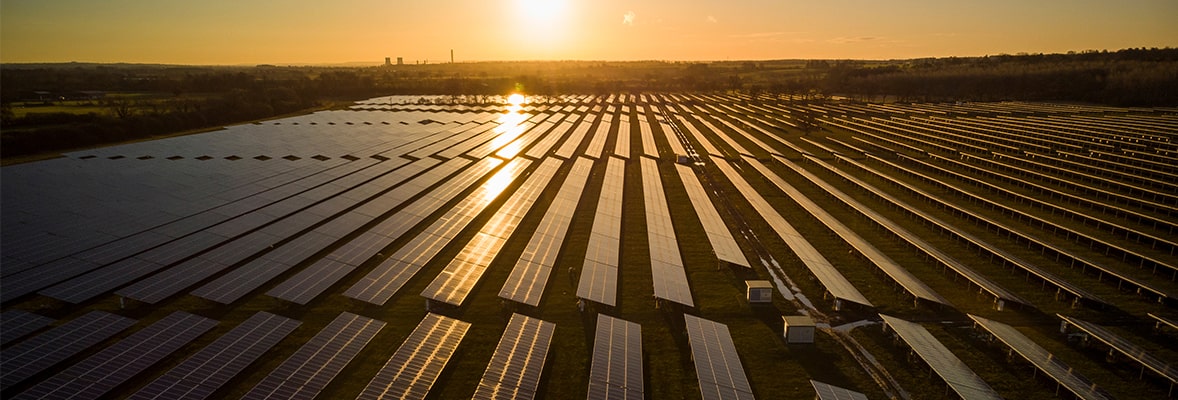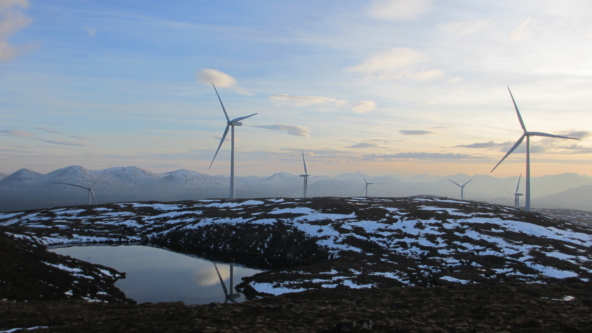
This article first appeared in Renewables Investor.
Could private capital unlock a renewable future for the UK?
Ten million viewers tuned in to enjoy the return of David Attenborough’s much-anticipated documentary, Blue Planet. The warning over global warming, depicted through the story of a walrus calf looking for a place to rest among melting icebergs, was hard to ignore.
It’s clear that awareness of the need to decarbonise is growing. Increasingly, UK consumers are holding big business to account. From demanding that their pension funds invest in renewables to expecting retailers, public spaces and offices to run off renewable energy, consumer demand for renewables is on the up.
This sustained demand builds the investment case for renewables.
Institutions are now faced with the opportunity to pursue a role in creating a renewable future, whilst at the same time pursuing attractive, long-term returns. This is particularly attractive for pension funds facing increasing pressure from the end investor.
Seeking a role
The UK Government’s clean growth plan calls attention to the need to decarbonise, but also to the challenge. $13.5 trillion of investment will be needed in the global energy sector alone between 2015 and 2030 if the signatories to the Paris agreement are to meet their national decarbonisation targets.
From a UK perspective, this investment cannot be funded by the government alone.
There is an opportunity for private capital to step into the fold. We see three key areas where private investment is needed to move on the UK’s renewable agenda – consolidation of ownership of renewable infrastructure; improved technology for energy storage and a reconsideration of the way electricity grids are managed.
Perhaps the most notable for investors is that renewable infrastructure assets are owned by many different developers with no intention of long-term ownership.
We expect developers, utilities, and other investors, namely short-term funds, to start to divest their existing assets. This will enable long-term private investors to build a greater share of renewable assets and ensure the optimisation of assets through investments in smart energy management technology.
Yet whilst the role institutions can play is apparent, the possibility of attractive relative returns is most likely to convince institutions to put private capital to work.
Seeking returns
Sustainable investing is often associated with lower returns. Yet in our view, particularly when it comes to renewables, this association is misguided.
Let’s look for a moment at the current market. Energy price risk is a concern for investors in traditional energy companies, particularly following Theresa May’s commitment to cap energy prices to protect household incomes from the Big 6 (now likely to be Big 5). Indeed, utility share prices plummeted following her announcement that the Conservatives would be implementing the crackdown laid out in their manifesto.
However, investments in the right kind of renewables can offer institutions an energy opportunity with less exposure to price risk.
Indeed, the existing subsidies on renewable assets minimise the effect of significant and long-term macroeconomic shocks, which raise more concern for investors in equities, bonds and other asset classes. At the same time, an investment in renewable infrastructure fits the time horizons of institutional investors and is cash yielding. Combining the long-term nature of renewables with their relative protection from macroeconomic factors makes for an attractive institutional investment opportunity.
We also expect increasing demand for green electricity from corporates to further support the predictable nature of cash flows from the renewable sector. These Corporate Power Purchase Agreements (PPAs) will come into their own alongside the next wave of renewable installations.
Lastly, with the right investment, there is an opportunity for institutions to access “debt like” returns from renewables. For existing solar and onshore wind assets, unlevered projects deliver “debt like” characteristics with higher returns.
For institutions looking for long-term sources of income and a way to access the renewables their end investors are demanding, the above factors are attractive.
Matching a role for institutions with likely returns will incentivise institutions to invest in our renewable future. With sustained consumer demand now driving the renewables investment case, role and returns are coming together.
For journalists in their professional capacity only. The value of an investment, and any income from it, can fall as well as rise. Investors may not get back the full amount they invest. Personal opinions may change and should not be seen as advice or a recommendation. We do not offer investment or tax advice. We recommend investors seek professional advice before deciding to invest. Issued by Octopus Investments Limited, which is authorised and regulated by the Financial Conduct Authority. Registered office: 33 Holborn, London, EC1N 2HT. Registered in England and Wales No. 03942880. Issued: January 2018.


